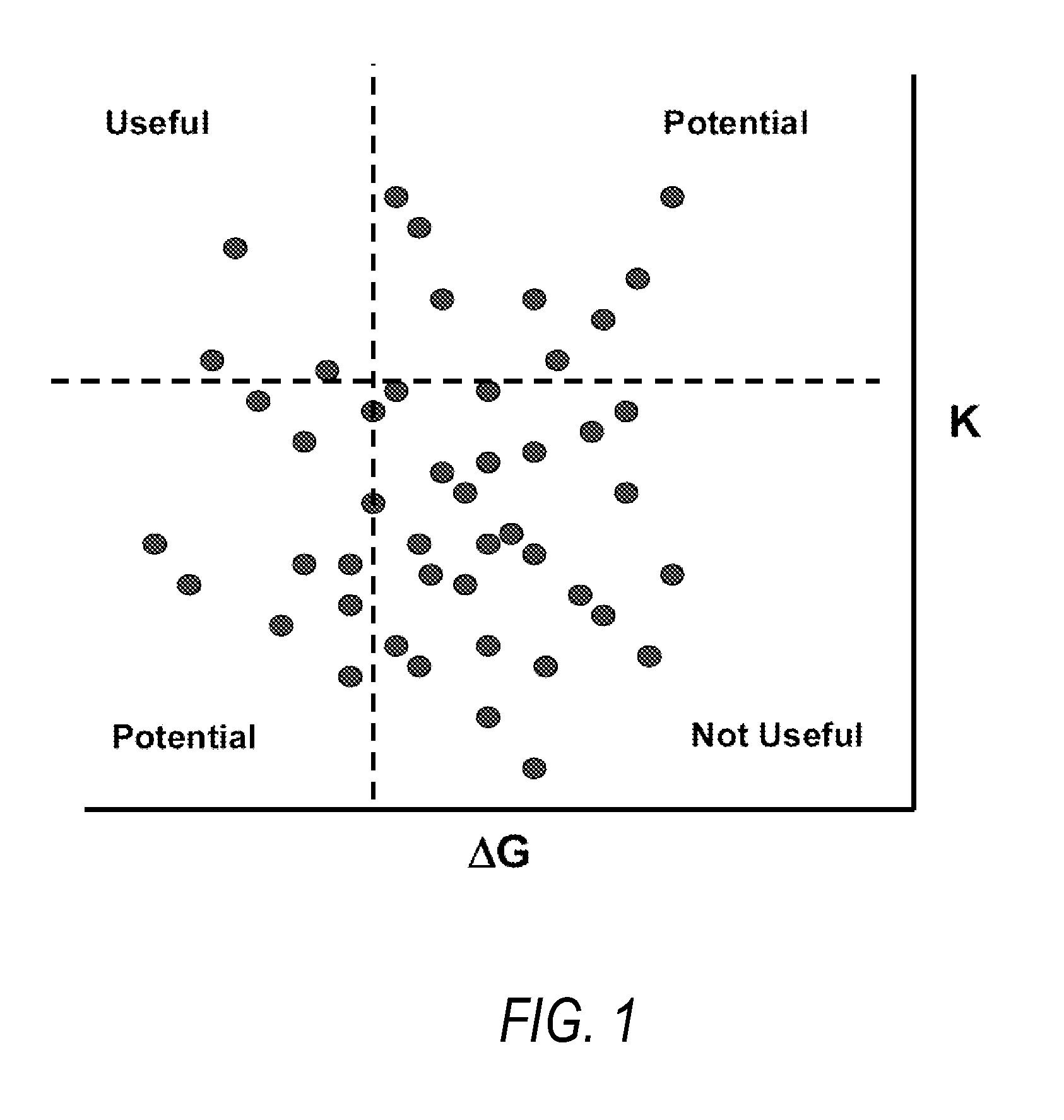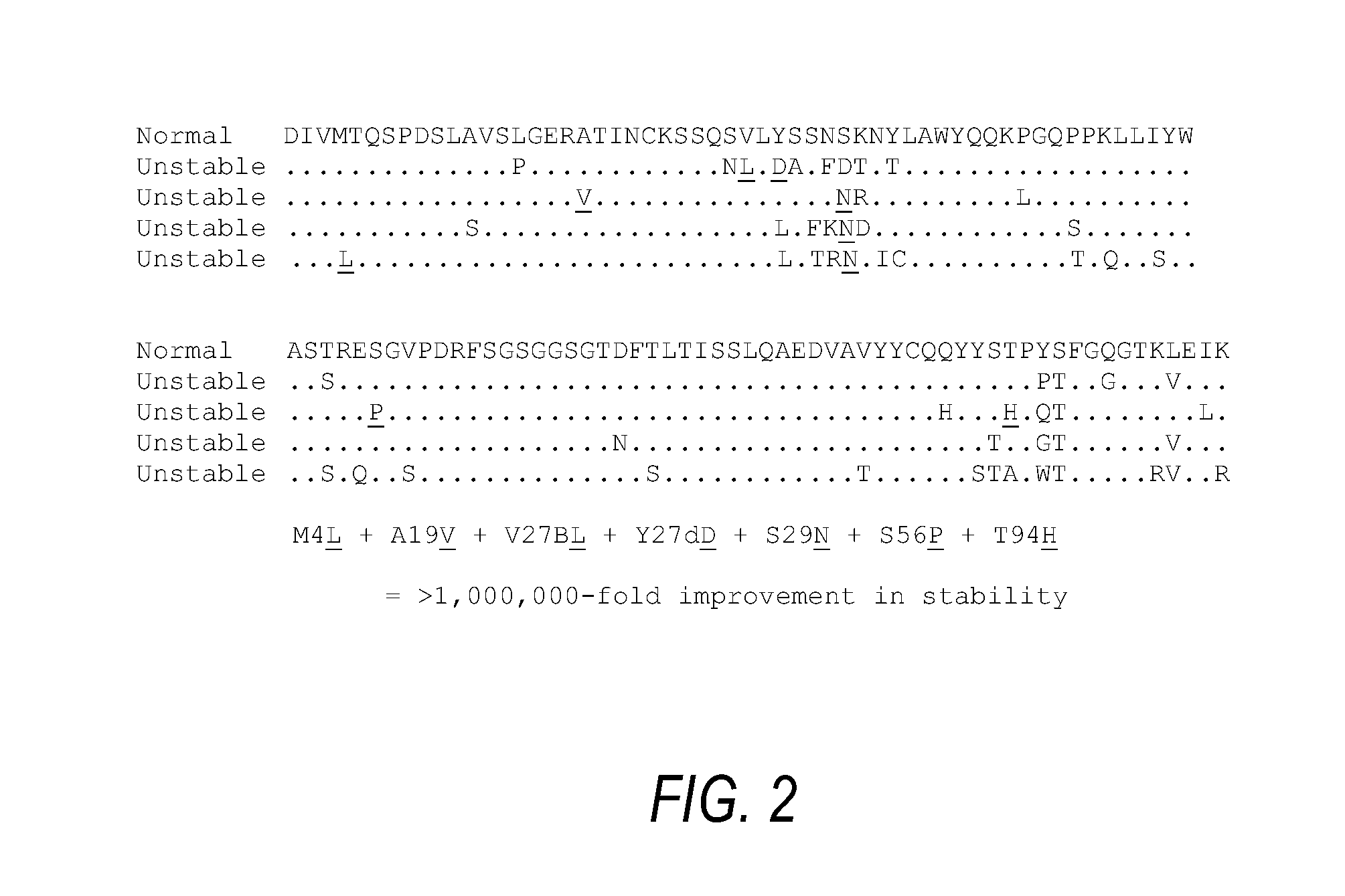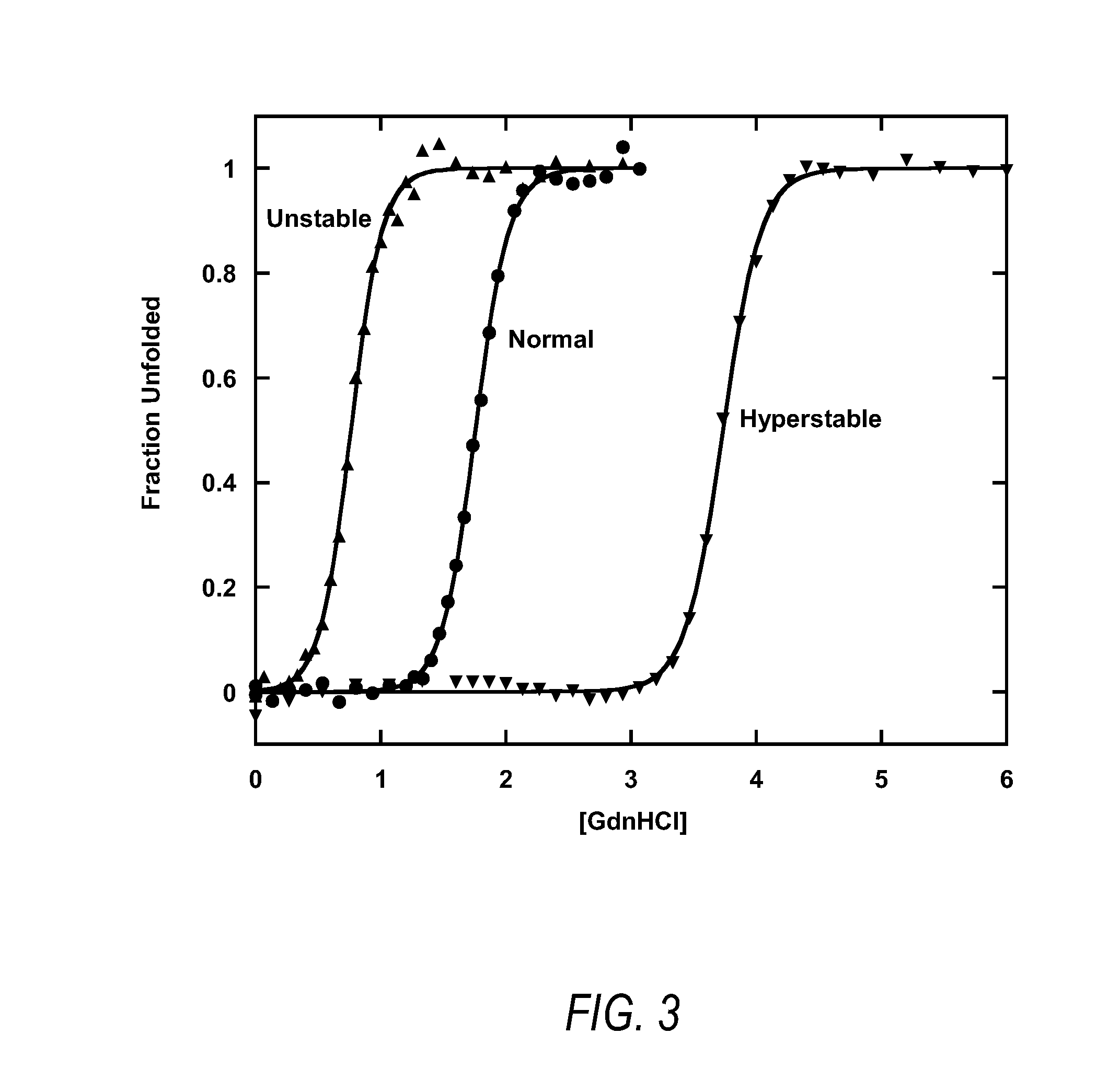Methods for systematic control of protein stability
a protein stability and protein technology, applied in the field of systematic control of protein stability, can solve the problems of reducing shelf life, affecting the stability of antibodies, or any other protein, and being traditionally a trial and error process, and achieve the effect of optimizing stability
- Summary
- Abstract
- Description
- Claims
- Application Information
AI Technical Summary
Benefits of technology
Problems solved by technology
Method used
Image
Examples
example 1
[0094]FIG. 2 shows an example of multiple alignment of amyloid light chain (human kappa-4) sequences from various myeloma patients. The top sequence is that of an amyloid light chain produced by a myeloma patient who experienced no clinical problems due to the protein. For the sake of convenience, it is considered as a “native” protein and therefore provides a baseline of normal stability. The other four sequences (only differences from the sequence of the normal protein are listed) are those of four amyloid forming kappa-4 light chains produced by different myeloma patients, encoded by the same germline gene as the normal protein. Taken separately, all of the sequences have significantly reduced stability. However, all incorporated some variations that improved stability, and those variations are indicated by underlining. When seven of these changes were combined, the result was a kappa-4 chain that had about 1,000,000-fold higher thermodynamic stability than the normal, and 1,000,...
example 2
[0096]As shown in Table 1, eleven amino acid changes were proposed for screening changes in stability for a human kappa-1 antibody light chain variable domain. Four of the changes were found to increase stability (highlighted in bold). The four amino acid changes were dispersed within the structure of the protein; thus, it was anticipated that the stability changes would be additive when combined within a single domain.
[0097]Replacement of alanine by valine at position 13, leucine by isoleucine at position 47, phenylalanine by leucine at position 73, and leucine by valine at position 78 confirmed this prediction, resulting in a 2000-fold improvement in the thermodynamic stability of the protein. The modified variable domain required an increased denaturant concentration of approximately 1 mole to achieve 50% unfolding, indicative of increased stability corresponding to a change in free energy of folding of −5.0 kcal / mole. The thermodynamic equilibrium constant of the original domain...
example 3
[0098]An antibody must be stabilized without impairing function. To examine this, two anti-laminin scFv constructs were modified with different amino acid replacements, and 1000-fold improvement in stability was achieved. The stabilizing mutations were combined in a single domain, resulting in an approximate ten-fold increase in yield compared to that obtained with the original anti-laminin construct. Binding of the mutants to laminin was monitored using Biacore instrument. As shown in FIG. 6, there was no significant difference in binding to laminin between the native protein and the mutants. This indicates that improved stability can be achieved without sacrificing performance. Alternative selection of amino acid substitutions and / or the availability of more than one useful antibody / scFv for the target of interest will minimize this occurrence.
PUM
| Property | Measurement | Unit |
|---|---|---|
| physiological body temperature | aaaaa | aaaaa |
| temperature | aaaaa | aaaaa |
| Tm | aaaaa | aaaaa |
Abstract
Description
Claims
Application Information
 Login to View More
Login to View More - R&D
- Intellectual Property
- Life Sciences
- Materials
- Tech Scout
- Unparalleled Data Quality
- Higher Quality Content
- 60% Fewer Hallucinations
Browse by: Latest US Patents, China's latest patents, Technical Efficacy Thesaurus, Application Domain, Technology Topic, Popular Technical Reports.
© 2025 PatSnap. All rights reserved.Legal|Privacy policy|Modern Slavery Act Transparency Statement|Sitemap|About US| Contact US: help@patsnap.com



